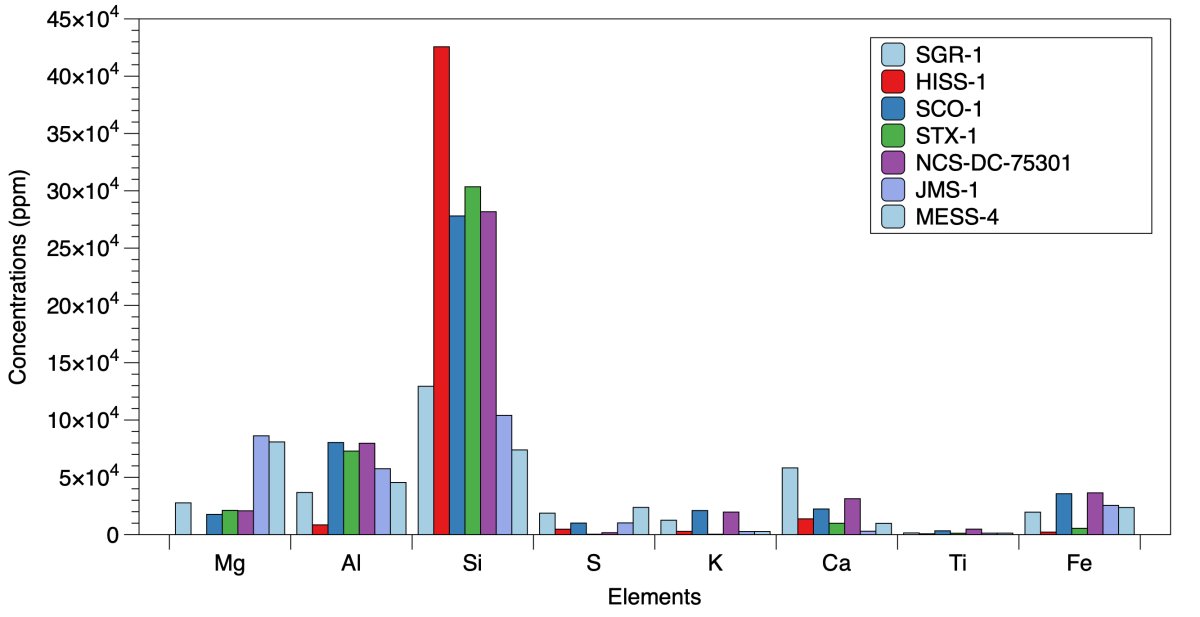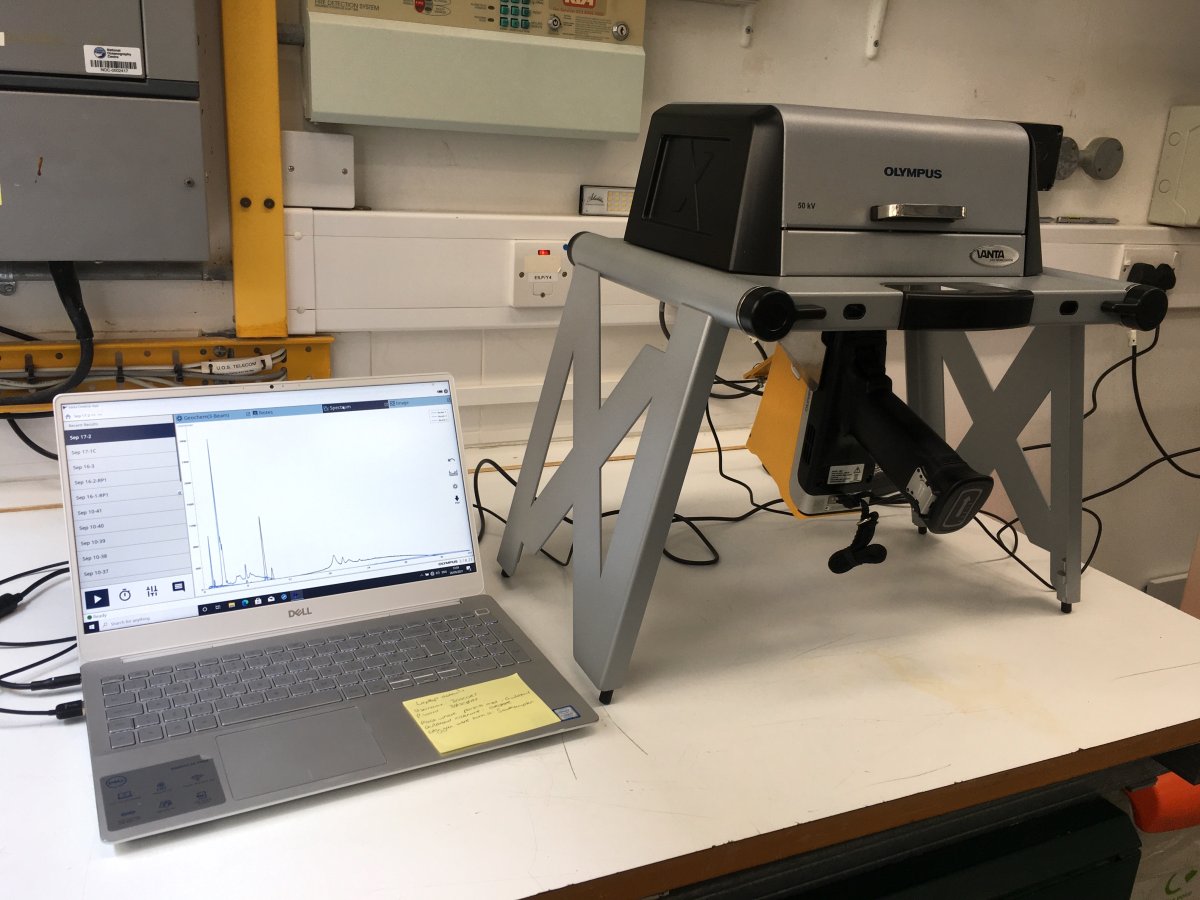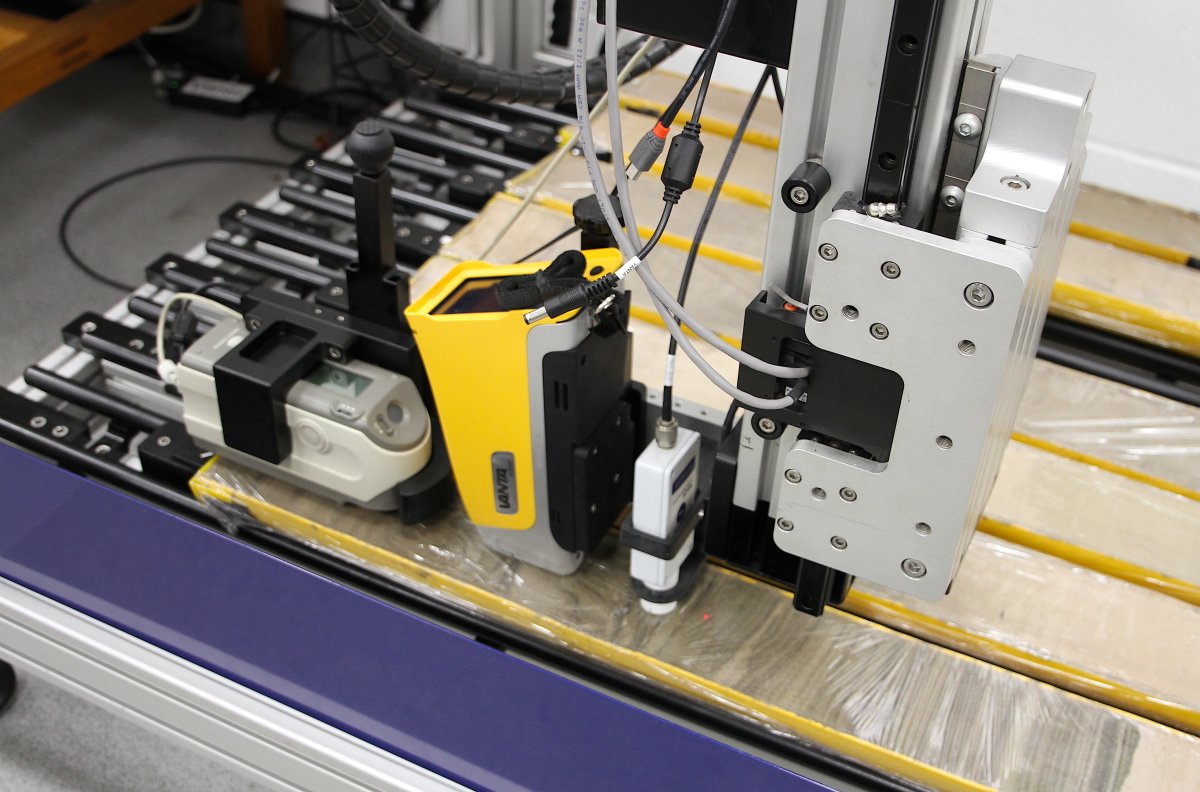The Instrument
This Olympus Vanta portable X-Ray Fluorescence (XRF) scanner can be operated in two modes:
- mounted onto the MSCL-XYZ
- mounted on a workstation/test chamber (see picture above)
Mounted to the MSCL-XYZ is the ideal set-up for core samples, whereas the workstation mode is suitable for discrete samples.
Major benefits of analysing samples by portable XRF scanning:
- Quick – measurement time is about 30 seconds per voltage
- Adjustable – depending on the elements of interest, measurement settings can be adjusted
- Versatile – can be used on core and discrete samples.
For samples that are less suitable to analyse using our XRF scanner, this portable XRF scanner may provide a solution.
Samples and Methods
The portable XRF scanner is primarily designed for discrete sample measurements. However, mounted to the MSCL-XYZ, the portable XRF scanner can be used as an automated scanning device.
Samples successfully analysed by the portable XRF scanner:
- Discrete rock, sediment, and fossil samples
- Sediment cores
Sample preparation
No specific preparation is needed in principle. However, a flat surface yields the most reproducible readings.
Measurement procedure
Depending on the mode in which the portable XRF scanner is operated (i.e., mounted to the MSCL-XYZ, or with the workstation) the scanner is operated in a manual or automated mode.
Data and Applications
Elemental concentrations are output in counts per second (cps) and/or parts per million (ppm). Depending on sample preparation, it is important to realise the for most applications these measurements are semi-quantitative (not corrected for grain size, water content of sample, etc.).

Scientific Applications
Portable XRF-scanning allows for the following scientific applications:
- Rapid assessment of sediment make up
- Lithological and sedimentological descriptions
- Investigations into pollutants, heavy metals, rare Earth elements
- Palaeoclimatic, -oceanographic, and -environmental research
- Cyclostratigraphy and astrochronology


